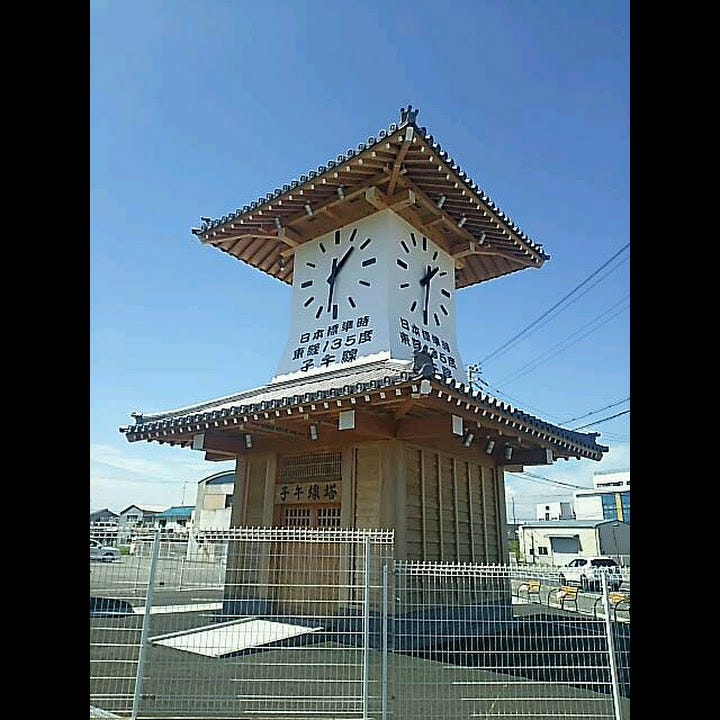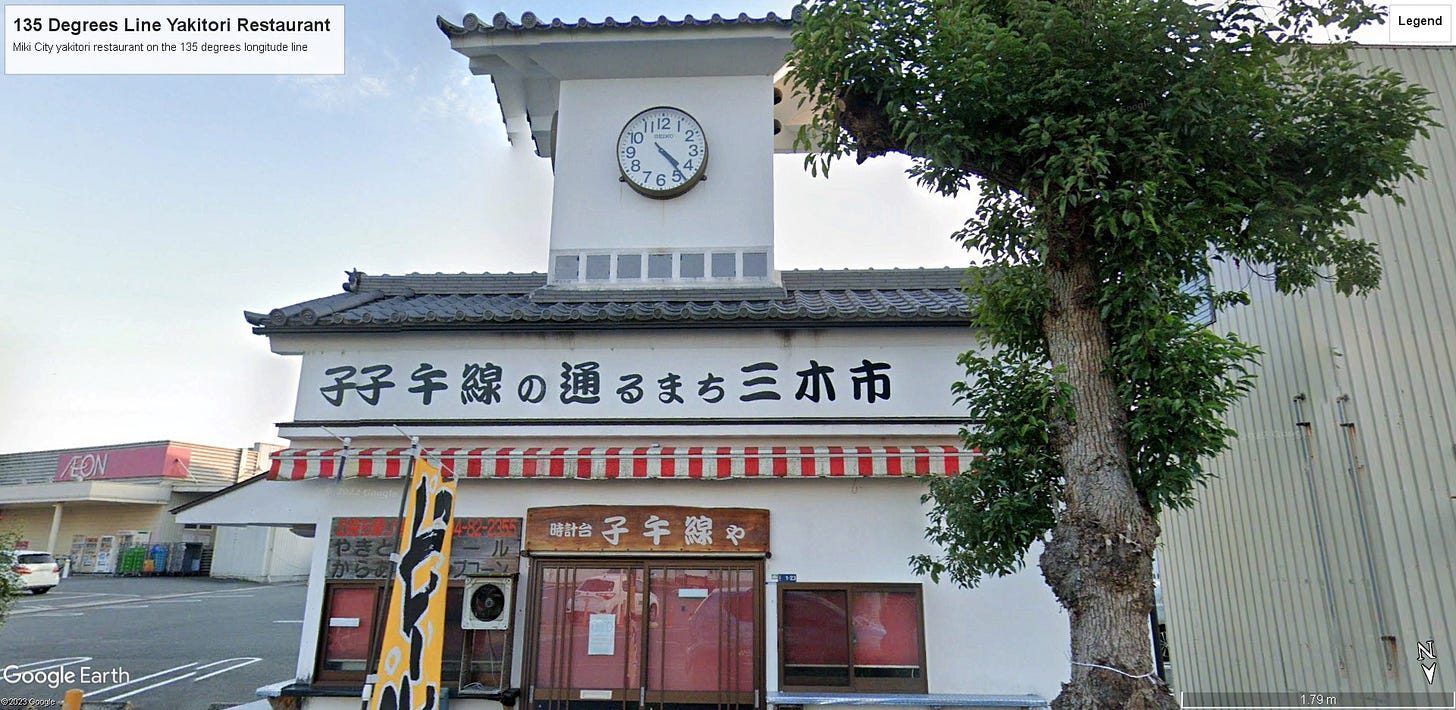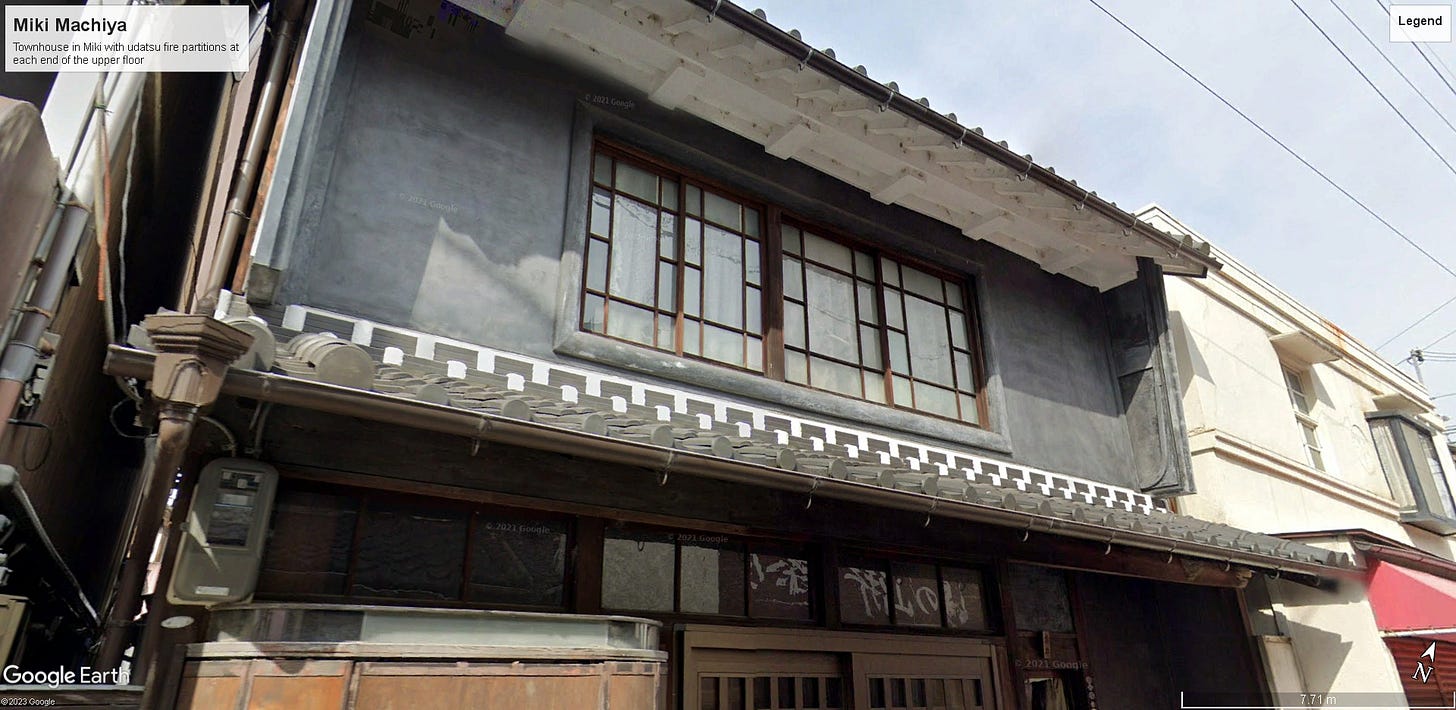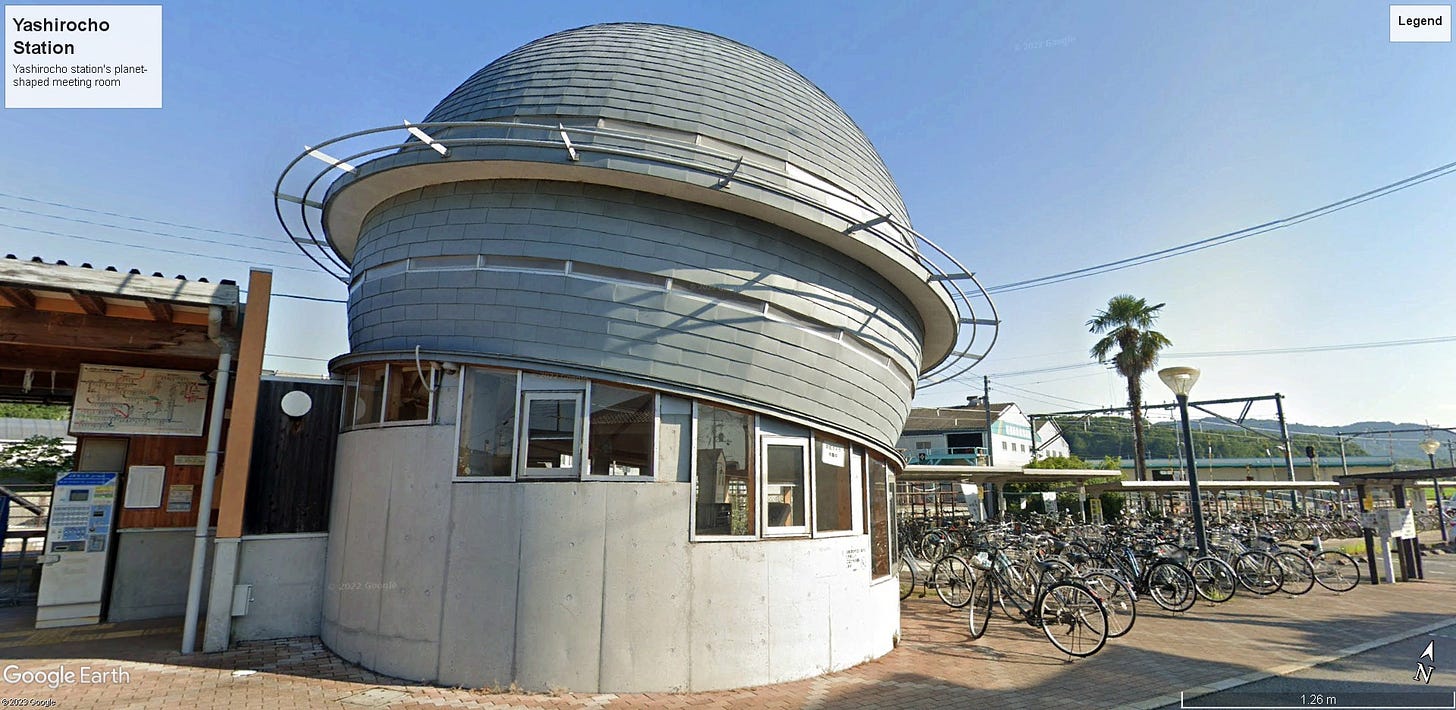Mediocre Suburb to Deep Inaka
From Midorigaoka to Yashirocho along the Japan Standard Time line
I returned to Midorigaoka the next day. The New Year’s holiday had just begun, and there was a subdued feel on the train from Kobe, no commuters, just day-trippers off to the onsen resorts in the hills behind the city. The sun was bright, the sky clear and the air crisp, but not too cold.
From the station, I drop down past reservoirs covered with solar panels towards the city of Miki. The first akiya empty houses appear - 1970s blue-roofs. Their location isn’t good, down in the bottom of a wooded valley right next to a fairly busy road. The population of Miki has declined from a peak of around 86,500 people in 1995 to about 73,500 by 2022. This brings the population back down to what it was in the late 1970s, just after areas like Midorigaoka were developed.
To the north of Miki there are so many golf courses it’s hard to count how many on satellite views. Japan has a lot of golf courses - 2,227 in 2019 according to the Japan Golf Course Management Association. But the number has fallen after peaking at 2,460 in 2002. About 13 golf courses close a year. At Kamigori, in deep rural Hyogo, one closed golf course has been converted into a solar farm - its treeless slopes are ideal for solar panels. There is, however, a growing popularity for golf, especially among young women. The Covid pandemic advice to avoid the three Cs of closed spaces, crowded places and close contact settings has provided a boon for low contact outdoor sports such as golf. Another boost was supplied by Matsuyama Hideki, who became the first Japanese man to win a major pro-golf tournament in April 2021.
During the 1970s and 80s, the areas around Miki became “amenity villages”, switching agriculture for rapid development from land sales to resort operators. Even the government pension fund joined in, opening a Greenpia resort to help pension recipients live meaningful post retirement lives. The Greenpia resort had cycle and running tracks, but most of the facilities seemed to be aimed at families: water slides and pools, go-karting and even a roller coaster. Eventually, the Greenpia facilities were sold off as a scandal erupted over the misuse of pension payments in 2004. Now, Greenpia lives on as Nesta Resort Kobe, with camping and glamping, zip-lines and canoeing, and with nobody over the age of forty in their advertising images.
(image from Google Earth)
On the way into the centre of Miki I pass a large clock monument marking the 135 degrees line. Farther on, a yakiniku restaurant has leveraged something out of its location by putting a clocktower on top and calling itself Shigosenya (Meridian Shop). Not uncoincidentally, I’ve never found a good translation for the English word “tacky” in Japanese.
Standing on the escarpment overlooking the Mino River, are monuments marking the site of Miki Castle. The city was an important stronghold of the Bessho clan. As Oda Nobunaga campaigned to unify Japan in the 1570s, he attempted to gain control of western Japan. Initially, the Bessho clan supported Oda, but due to some perceived slight (or perhaps their traditional allegiance to the Mori clan to the west), they switched sides and began to campaign against him. The eventual unifier of Japan, Toyotomi Hideyoshi was sent to besiege Miki Castle and open the way into western Japan. The siege lasted for nearly two years, from spring 1578 to January 1580. Eventually, supply lines to the castle were cut, resistance crumbled, and the castle was taken. Under the “one clan, one castle” rule of the Tokugawa Shogunate, the castle was demolished and the parts used to help reconstruct Akashi Castle - the one castle allowed to the daimyo of the Akashi domain.
Below Miki Castle is the Yunoyama Kaido, an old road that leads to Arima Onsen, a hot spring resort in the mountains behind Kobe. The road started as a route for taking those injured in the siege of Miki Castle to recuperate. Later, it connected to the Tokaido and was used for the daimyo processions to and from Edo (Tokyo) for their alternating years as effective hostages of the Shogunate. The street is now a typical shotengai shopping street - shuttered shops and a tattered awning along its length, but there are still some traditional machiya townhouses with udatsu stucco-covered fire prevention partitions to stop fire spreading from one building to the next.
I leave Miki on the kind of road I like least - narrow, busy two-way passes with nowhere to walk on either side. Fortunately, this one is short, and I make it through unscathed. On the other side of the brief pass through the hills, I follow a small river down to the main Kakogawa river. In the reed-filled bottom of the concrete-lined river channel, I spy a stoat, briefly visible, and then just a sway in the reeds.
I will now follow the Kakogawa all the way up to Funamachiguchi deep in the mountains of Hyogo. The Kakogawa and its tributaries will be the last rivers I will follow that flow into the Seto Inland Sea. By the time I reach Fukuchiyama, the rivers will be flowing the other way, towards the Sea of Japan.
I cross the Kakogawa, go past a concrete plant and walk along a high embankment above the river. It’s the middle of the day, and despite being late December it feels warm in the sun. I stop and eat lunch gazing at the bamboo-covered riverside. It takes my eyes a while to adjust, but in the darkness of the bamboo I can see a fox sleeping. There’s something incongruous about seeing a red fox in bamboo. English lore has them in woodland, breaking into hen coops, skulking along field edges. Curled up in bamboo? It stays there happily warming itself in the sunlight penetrating the crowded bamboo, even as I crumple convenience store sandwich packets and rearrange my rucksack.
(Yes, that’s a fox in the bamboo. Apologies for the limitations of my camera technology!)
I continue up the river, here and there I pass small stone monuments to ferry crossing points from the days before bridges. Another big concrete plant on the other side. The flat, drained paddies are broken by clumps of trees marking shrines. I’m looking for another convenience store, from the raised embankment I can see far into the riverside towns. But there isn’t one. It’s disconcerting. I’ve relied on always being within a few minutes walk of a convenience store, never carrying more food than I need. I have to make do with a hot drink from a vending machine next to a school sports facility. This is getting to be deep inaka.
The small town of Yashirocho is my final stop. Its only notable feature is that the station has an odd planet-shaped building, a tilted Saturn of metal shingle and slit windows, that houses a community meeting room.









